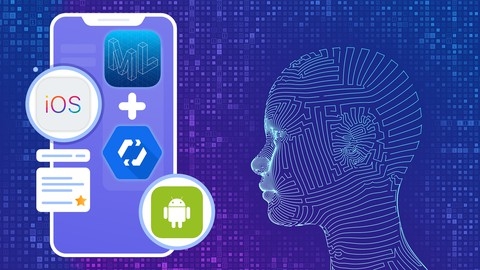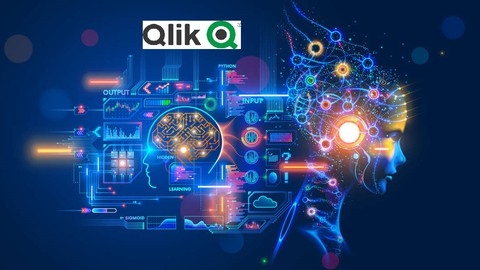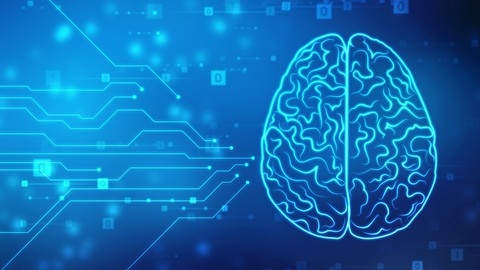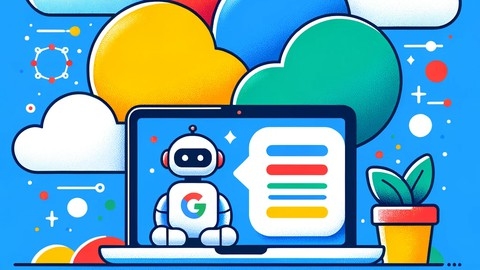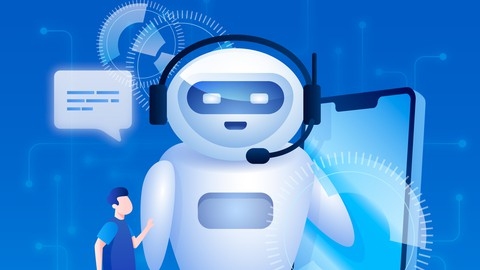Automated Machine Learning (AutoML) is a revolutionary field in machine learning that allows you to build and deploy powerful models without extensive coding knowledge.
It streamlines the process by automating key tasks like data preparation, model selection, and hyperparameter tuning, making it accessible even for beginners.
By learning AutoML, you can unlock the potential of machine learning for your projects, regardless of your technical expertise.
Finding the right AutoML course on Udemy can be challenging, as there’s a wide range of options available.
You’re searching for a comprehensive and engaging course that combines theory with practical experience, equipping you with the skills to build real-world AutoML applications.
We’ve carefully evaluated numerous AutoML courses on Udemy and recommend Automated Machine Learning for Beginners (Google & Apple) as the best course overall.
This program stands out for its well-structured curriculum, covering both theoretical concepts and hands-on applications using Google AutoML and Apple’s CreateML platforms.
You’ll gain practical experience with these tools and build a solid foundation in AutoML principles, making it a valuable resource for beginners and those looking to expand their skills.
While Automated Machine Learning for Beginners (Google & Apple) is our top recommendation, other excellent AutoML courses on Udemy cater to different learning styles and interests.
Continue reading to discover our curated list of the best AutoML courses, covering various platforms and applications.
Automated Machine Learning for Beginners (Google & Apple)
This course offers a comprehensive introduction to automated machine learning, covering both theoretical concepts and hands-on applications.
You’ll start by learning the fundamentals of machine learning and the 5-step pipeline.
The course then dives into computer vision applications like image classification and object detection using Google AutoML and Apple’s CreateML.
You’ll train models on datasets and deploy them for real-world use cases.
Next, you’ll explore natural language processing tasks such as sentiment analysis and document classification, again using AutoML and CreateML tools to build and evaluate models.
The course also covers tabular prediction, allowing you to make predictions on large tabular datasets using regression techniques in both AutoML and CreateML environments.
Hands-on projects form a key part of the learning experience.
You’ll create digital prototypes using Figma and deploy machine learning models in Android and iOS apps using tools like Android Studio and Xcode.
The course culminates in a final term project where you’ll define your own problem statement and train a custom machine learning model as a capstone project.
Throughout the course, you’ll have access to the AIBrain community for support and collaboration.
You’ll get to choose your preferred machine learning platform - whether Google’s AutoML suite or Apple’s CreateML tools - for the practical components.
No-Code Machine Learning with Qlik AutoML
The course starts by introducing you to the fundamentals of machine learning and automated machine learning (AutoML).
You’ll learn what AutoML is, its key benefits, and how it works under the hood.
From there, the course dives into Qlik AutoML, a powerful AutoML platform.
You’ll get an overview of its features, use cases, and the algorithms it uses.
This section will familiarize you with important machine learning terms like F-Score, permutation importance, SHAP importance, model fitting, correlation matrices, ROC curves, confusion matrices, hyperparameters, cross-validation, and automatic holdout.
Once you have the theoretical foundation, you’ll sign up for the Qlik AutoML free trial and start hands-on projects.
The first project involves breast cancer diagnostic prediction analysis, where you’ll add data, create a project, manage the data pipeline, explore the training data model output, and understand the Qlik AutoML cards in detail.
You’ll then use the model to generate predictions, compare them with actual values, perform what-if analysis, refine the training data, and even deploy the project.
But that’s not all – the course covers four more real-world projects on stock value prediction, customer churn prediction, weather forecasting, and multiclass analysis on the BBC news dataset.
With each project, you’ll reinforce your skills and gain confidence in using Qlik AutoML.
Finally, the course wraps up by providing tips on improving model scores, resources for finding datasets to practice, and congratulations on completing the course.
Automated Machine Learning Hands on AutoML for beginners
You will start with an overview of AutoML and the necessary resources.
The course then dives into Auto EDA (Exploratory Data Analysis), providing you with tools to automatically analyze and understand your data.
From there, you will explore six different AutoML libraries, each with regression and classification examples.
This practical approach allows you to gain hands-on experience with various AutoML tools and techniques.
For each library, you will learn how to apply AutoML to both regression and classification problems.
The course covers a wide range of AutoML libraries, ensuring you gain exposure to different approaches and methodologies.
You will work with real-world datasets, giving you a realistic understanding of how AutoML can be applied in practice.
Throughout the course, you will encounter important notes and additional learning resources to supplement your understanding.
The hands-on nature of this course ensures you develop practical skills in AutoML, enabling you to tackle complex machine learning problems more efficiently.
Practical AI and Machine Learning with Model Builder AutoML
You will start by learning how to set up Visual Studio and create coding projects.
Then, the course dives into the fundamentals of machine learning, covering topics like data preparation, model training, and performance evaluation.
One of the key strengths of this course is its hands-on approach.
You will follow along with a practical machine learning demo using Model Builder, which will reinforce the theoretical concepts you’ve learned.
This includes steps like loading training data, preparing it for modeling, choosing appropriate evaluation metrics, and interpreting model performance.
The course also covers important machine learning concepts like overfitting, cross-validation, and regularization techniques used to mitigate overfitting.
You will learn how to consume trained models in applications and test them against separate data sets to assess their generalization performance.
Additionally, the course includes bonus content on Generative AI, which distinguishes it from traditional AI approaches.
You will learn about neural networks, deep learning architectures like Variational Autoencoders (VAEs), Generative Adversarial Networks (GANs), and Transformer models with attention mechanisms.
This section provides insights into the cutting-edge of AI technology.
Throughout the course, you will work with Visual Studio and Model Builder, gaining practical experience with these tools.
The course strikes a balance between theoretical explanations and hands-on exercises, ensuring you understand both the concepts and their practical applications.
Automated Machine learning (AutoML) for Marketing Analytics
The course covers a wide range of topics that are highly relevant for marketing professionals.
You’ll start with an introduction to sector-specific use cases, setting up Google Colab, and exploring inbuilt datasets to kickstart your learning journey.
This lays a solid foundation for the subsequent chapters.
One of the key topics covered is Recency Frequency Monetary (RFM) Analysis, which is crucial for understanding customer behavior.
You’ll learn what RFM analysis is, how to use it, and go through an example with tips and tricks.
A quiz at the end solidifies your understanding.
The course then dives into Customer Churn Prediction using PyCaret’s Classification module.
You’ll learn the PyCaret workflow, explore datasets, preprocess data, create and compare models, and visualize results like confusion matrices, ROC curves, and feature importance plots.
Making predictions is also covered.
Customer Segmentation is another vital aspect, taught using PyCaret’s Clustering module.
After learning the workflow, you’ll explore clustering evaluation metrics through a quiz.
Visualizing and interpreting clusters is emphasized.
Calculating Customer Lifetime Value based on RFM segmentation is explored next, including using linear regression.
Sentiment Analysis, a crucial tool for marketing analytics, is covered comprehensively.
You’ll learn what it is, how to use it, and implement techniques like TextBlob, Vader, and Text2Emotion on real datasets.
The course also introduces you to PyCaret’s Anomaly Detection module, covering types of anomalies and a social media monitoring example.
Topic Modeling with PyCaret is another highlight, where you’ll learn the intuition behind it, how LDA works, evaluating results, and go through the entire PyCaret workflow step-by-step.
Finally, Association Rule Mining with PyCaret is explored in-depth, covering key concepts like support, creating models, visualizing results, and an alternative approach called Efficient Apriori.
AutoML Automated Machine Learning BootCamp (No Code ML)
You’ll start by learning the fundamentals of machine learning, including supervised and unsupervised techniques, the machine learning lifecycle, and model evaluation metrics.
Next, you’ll dive into cloud computing and explore Amazon Web Services (AWS).
The course covers an introduction to cloud computing, getting started with AWS, and an overview of different AWS services.
The highlight of the course is the practical section on AWS SageMaker Canvas, where you’ll apply your knowledge to a real-world use case: predicting diabetes.
You’ll learn how to use SageMaker Canvas, a no-code machine learning solution, to build and deploy a machine learning model without writing any code.
Throughout the course, you’ll gain hands-on experience with AWS and SageMaker Canvas, equipping you with the skills to leverage AutoML and cloud computing for your own projects.
Master Automated Machine Learning :Build Real World Projects
The course covers a wide range of real-world projects that will help you master automated machine learning.
You’ll start with the Visionary Image Caption Bot, an AI-enabled image description generator.
This involves data cleaning, preprocessing, preparation, training the model, and more.
Next, you’ll work on the Poverty Prognosticator to predict household poverty in Costa Rica using data preprocessing, feature engineering, and model creation.
The Stroke Soothsayer project focuses on early stroke detection and prediction through data preprocessing and model building.
You’ll also build an Auto Price Oracle for precise car price prediction, a Sales Savant for forecasting Bigmart sales using data analytics, and a Loan Logic system for in-depth loan approval analysis and prediction.
Other projects include predicting employee attrition with Talent Triage, building a Hotel Booking Oracle, and creating a Weather Wizard for apparent temperature forecasting.
The course covers consumer complaint classification, live sketch generation from images, preserving traditional dances through AI, detecting plant diseases for healthy crops, and identifying car brands from images.
You’ll also work on tweet analysis, emotion analysis using NLP, enhancing Amazon Alexa’s user experience, building an early warning system for disasters, and evaluating movies with data-driven insights from IMDb.
Additionally, you’ll learn to ensure justified user access using NLP for vaccination verification, analyze blood donation patterns, classify DNA sequences for genomic insights, detect kyphosis disease, and predict mortality in intensive care units using neural networks.
The course also covers analyzing trends in suicide rates, e-signing loans based on financial histories, mutual fund portfolio analysis, predicting NYSE stock prices, credit card default prediction, and in-depth data analysis for financial insights from RBI.
Machine Learning on Google Cloud with AutoML and VertexAI
The course covers a wide range of topics related to AutoML and VertexAI, Google Cloud’s machine learning platform.
You’ll start with an introduction to Vertex AI and AutoML, which are Google Cloud’s solutions for building machine learning models without extensive coding.
The course then dives into different types of data and how to use AutoML for various tasks.
For text data, you’ll learn how to build classification models and entity extraction models using AutoML.
This is useful for tasks like sentiment analysis, spam detection, and named entity recognition.
When it comes to video data, the course teaches you how to build action recognition models with AutoML.
You can use these models to automatically detect and classify actions in videos, which has applications in areas like security and sports analysis.
The course also covers tabular data, specifically time-series forecasting models.
You’ll learn how to build models that can forecast future values based on historical data, which is valuable for tasks like sales forecasting and inventory management.
For image data, you’ll learn how to build image classification models and object detection models using AutoML.
These models can automatically classify images into different categories or detect and locate objects within images, which is useful for applications like computer vision and image analysis.
Interestingly, the course includes a lab where you’ll build a Covid detection model using image classification.
This is a practical example of how you can apply the skills learned in the course to real-world problems.
The course also includes appendices on Google Cloud Storage and machine learning metrics, which provide additional context and knowledge to support your learning.
Master AutoML - Google Cloud - Vertex AI
The course starts with an introduction to AutoML and Google Cloud Vertex AI, giving you a solid foundation.
You’ll dive into AI concepts like dependent and independent variables, ML concepts, regression, classification, and how to measure accuracy.
This prepares you for the next sections on regression, classification, and NLP in Vertex AI.
For regression, you’ll learn multiple linear regression models.
The classification section covers techniques for categorizing data.
The NLP module explains natural language processing concepts before showing you how to use NLP in Vertex AI.
Finally, the course covers image identification, an increasingly important application of AutoML.
You’ll understand the fundamentals and then apply them using Vertex AI’s capabilities.
Throughout, you’ll gain hands-on experience with Google Cloud’s Vertex AI platform for building AutoML models.
The course equips you with a comprehensive understanding of AutoML concepts and their implementation on a leading cloud platform.
AutoML with ChatGPT | ChatGPT for Data Science
The course starts with an introduction to large language models (LLMs) and generative AI, which power tools like ChatGPT.
You’ll learn about transformers and neural networks that underlie these models.
From there, you’ll dive into using ChatGPT as an AutoML tool.
You’ll learn how to create and debug computer programs, access data from online sources, and build machine learning models entirely with ChatGPT’s assistance.
The course even covers building a word cloud using Streamlit with ChatGPT’s help.
The syllabus also explores ChatGPT’s role as a technical architect, guiding you through leveraging its capabilities for architectural tasks.
Additionally, you’ll get hands-on experience building machine learning models with Google’s Bard and learn about its useful features.
Prompt engineering, a crucial skill for effective use of language models, is another key topic covered.
You’ll understand what it is and see it in action through practical examples.
Importantly, the course addresses data privacy issues, ensuring you learn to use these powerful tools responsibly.
